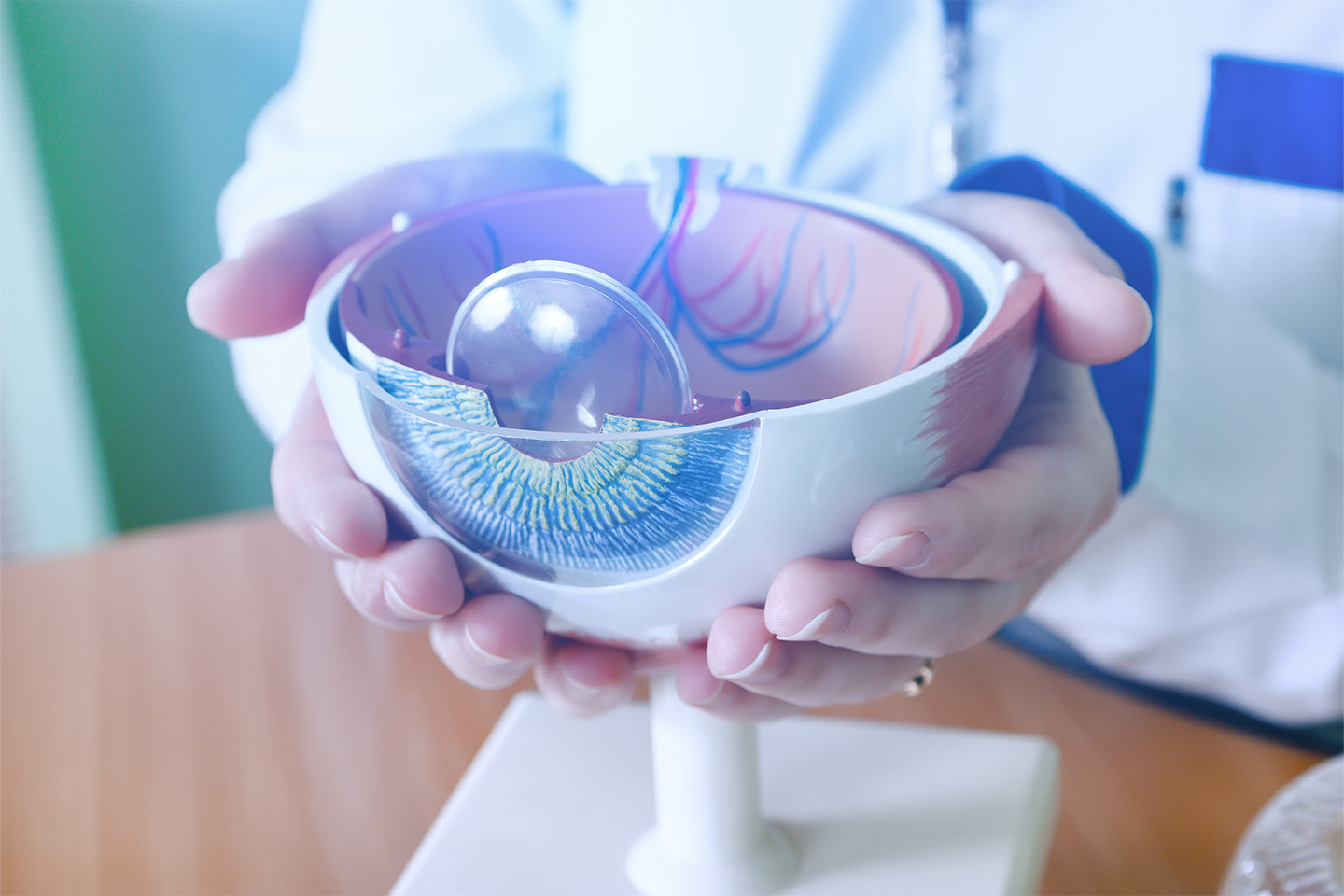What Are the Stages of Cataracts? Understanding Cataract Progression

Cataracts are a common eye condition that occurs when the proteins in the eye’s natural lens — the soft, flexible part of the eye that helps light focus onto the retina — break down and form clusters on the lens, leading to vision impairment. There are different types of cataracts, including age-related cataracts, traumatic cataracts, congenital cataracts (or pediatric cataracts), and secondary cataracts. The most common type is age-related cataracts, which typically develop gradually over time. Regardless of the kind, all cataracts progress through four stages: early, immature, mature, and hypermature. These stages provide a standard for ophthalmologists to understand a cataract’s severity, guide treatment decisions, and evaluate insurance coverage eligibility for cataract surgery.
Stage 1: Early Cataracts
Early cataracts most often occur in younger individuals. During this stage, the lens remains mostly clear, with minimal impact on vision. Some people may not experience any symptoms of cataracts; others may notice only subtle changes to their eyesight that include:
- Slightly blurred or cloudy vision
- Increased sensitivity to bright lights
- Mild and more frequent eye strain
Wearing sunglasses to reduce glare and using brighter lighting when reading may help manage symptoms.
Stage 2: Immature Cataracts
This stage is characterized by partial clouding as proteins start to group, which causes more noticeable symptoms that begin to interfere with daily activities. As less light can pass through the lens, individuals may experience:
- More noticeable blurred vision
- Fading or dulling of colors
- Difficulty seeing in low light or at night
- Increased glare or halos around lights
Eye doctors may prescribe corrective eyeglass lenses with antiglare features and recommend using brighter lights at work and home to accommodate vision changes. Wearing contact lenses may also help improve night vision. However, cataracts will continue to progress.
Stage 3: Mature Cataracts
By this stage, the cataract has fully developed and light cannot pass through the lens, causing severe vision impairment. The lens appears visibly cloudy, and your quality of life is compromised. Eye doctors most often recommend cataract surgery at this stage to restore vision, as prescription eyeglasses or other aids are unlikely to offer enough correction for a noticeable improvement. Patients may experience:
- Significant vision loss
- Difficulty reading and driving
- Double vision
- Trouble distinguishing colors
- Halos around lights
Consulting with an ophthalmologist will help determine the best treatment options and intraocular lens (IOL) selection to support your vision goals. Timely intervention can prevent further complications from cataracts.
Stage 4: Hypermature Cataracts
At this advanced stage, the cataract has become very dense, and the lens may begin to shrink and harden. This change can cause inflammation and increased intraocular pressure. If cataracts reach this stage, eye surgery is critical not only to restore vision but also to prevent potential complications such as glaucoma or lens dislocation. Hypermature cataracts are more challenging to remove, and delaying treatment can increase the risk of surgery-related complications. Symptoms can include:
- Severely impaired vision
- Reduced vision acuity
- A white or milky appearance of the pupil
- Eye pain or redness
Concerned About Cataracts? Trust the Experts at Kleiman Evangelista Eye Centers of Texas
Regular eye exams are crucial in monitoring the stages of cataract development and allowing for timely interventions that can prevent significant vision loss and improve quality of life. Request your free cataract consultation with the team at Kleiman Evangelista Eye Centers of Texas if you’ve noticed signs of cataracts or other changes to your vision. With over 40 years of experience, our board-certified eye surgeons are highly trained in using the latest technology, including advanced cataract lens implants, laser-assisted cataract surgery, and ORA System™ testing to refine and personalize your results. Visit us with your cataract concerns and see why we’re Texas’ cataract experts.
[DISPLAY_ULTIMATE_SOCIAL_ICONS]







